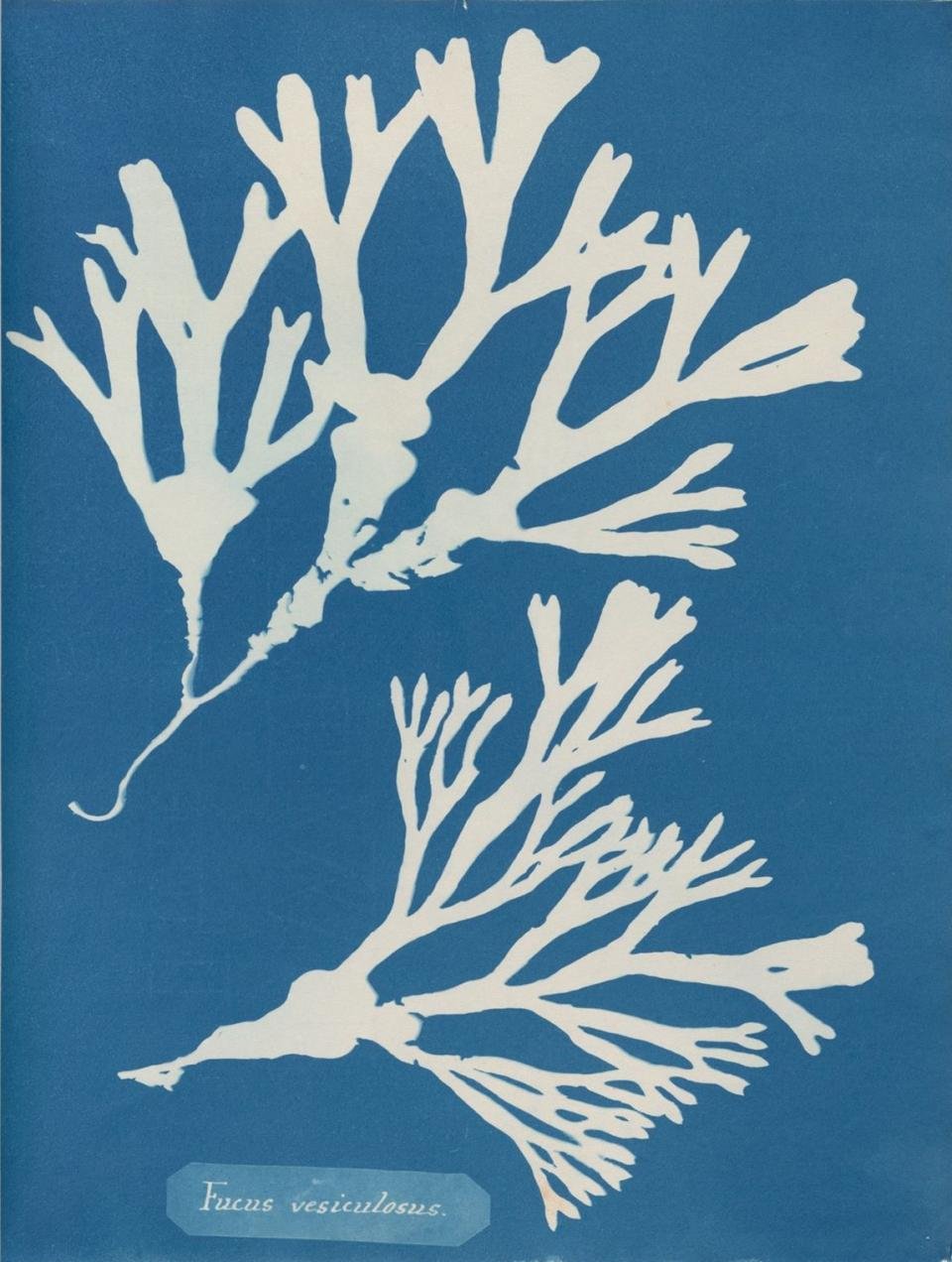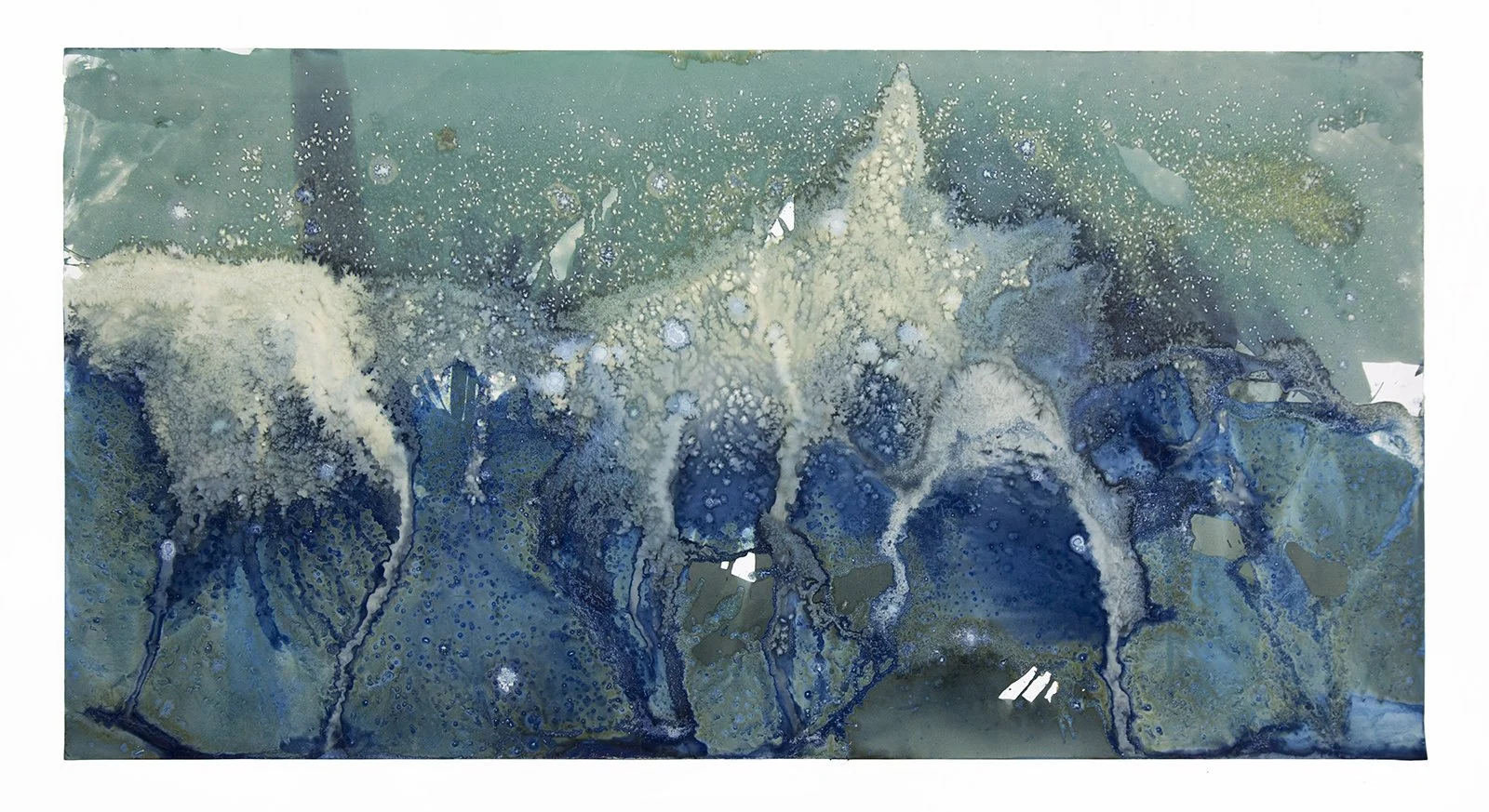Anna Atkins & Cyanotypes
Anna Atkins
Anna Atkins (1799-1871), an English botanical artist, collector, and photographer, was the first person to illustrate and print a book with photographic images. Her self-published book, “Photographs of British Algae: Cyanotype Impressions” (1843), was the result of her utilisation of the cyanotype photographic process and was the first substantial application of photography to science. Atkins combined her passions for scientific inquiry, technological experimentation, and artistic expression.
Atkins was raised by her father John George Children, who worked at the British Museum. He was a well-respected scientist and the first president of the Royal Entomological Society of London, which likely allowed Atkins to participate in science in a way that many women were restricted in doing in the nineteenth century. However, botany and, in particular, botanical art and illustration were considered a suitable hobby for women and working at her father's side, Atkins became an accomplished illustrator.
In her early twenties, she completed 256 scientifically accurate watercolour and graphite illustrations of shells, which were published in her father's English translation of Jean Baptiste de Lamarck's catalogue, Genera of Shells (1822-24).
Atkins was introduced to the art of photography by William Henry Fox Talbot, a British inventor. Talbot's photographic process was patented in 1841, and shortly after that, Atkins and her father, who was a well-known scientist, decided to replicate the process, known as "talbotype," at their home. However, it was a different photographic process, called cyanotype, that fascinated Atkins the most. The cyanotype process was developed by her neighbour and friend Sir John Herschel, which produced prints in blue-and-white that Atkins admired for their sharp outlines and vivid colours. Throughout the 1840s and early 1850s, Atkins added hundreds of new plates to Photographs of British Algae while refining cyanotype chemical solutions and exposure times.
In 1853, after completing, “Photographs of British Algae: Cyanotype Impressions”, Atkins shifted her focus to terrestrial plants and created another book called "Cyanotypes of British and Foreign Plants and Ferns", which is believed to be her most accomplished work. Atkins and her pioneering work were largely forgotten by the 19th century, however, recent research by scholars and artists has revived interest in her contributions to science, technology, publishing, and art.
In October 2018 the exhibition Blue Prints: The Pioneering Photographs of Anna Atkins opened in the Wachenheim Gallery in the Stephen A. Schwarzman Building of the New York Public Library. The exhibition was the result of over a decade of research which aims to place Atkins and her esteemed work in the appropriate context. The exhibition sheds light on her productions and highlights the unique cyanotype process, which is still used by artists today.
What is Cyanotype
Cyanotype is a photographic printing process that produces a cyan-blue print. It was developed in the 19th century by Sir John Herschel and gained popularity as a simple and inexpensive method for creating photographic images. Cyanotype involves coating paper or other surfaces with a light-sensitive solution containing a mixture of ferric ammonium citrate and potassium ferricyanide. When exposed to UV light, such as sunlight, a chemical reaction occurs, resulting in a blue image. Adding hydrogen peroxide to a wash develops the print instantly. It is permanent and archival, although it can become yellow over time. Cyanotype is non-toxic and does not present any significant health risk.
Contemporary Artist Using Cyanotype
Meghann Riepenhoff
Littoral Drift
Statement: This work stems from my fascination with the nature of our relationships to the landscape, the sublime, time, and impermanence. Entitled Littoral Drift, a geologic term describing the action of wind-driven waves transporting sand and gravel, the series consists of camera-less cyanotypes made in collaboration with the landscape and the ocean, at the edges of both. The elements that I employ in the process—waves, rain, wind, and sediment—leave physical inscriptions through direct contact with photographic materials.
Photochemically, the pieces are never wholly processed; they will continue to change over time in response to environments that they encounter. As part of the larger project, I selectively re-photograph moments in the evolution of the images, to generate a series of static records of a transitory process. Entitled Continua, the progressive images are shown as polyptychs. Perhaps where the fugitive cyanotypes are analogies for a terrifyingly fleeting and beautiful existence, the process of re-photographing them is a metaphor for the incorporation and mediation of photography in the contemporary human experience.
http://meghannriepenhoff.com/project/littoral-drift/
Littoral Drift Nearshore #209 (Springridge Road, Bainbridge Island, WA 02.12.15, Fletcher Bay Water Poured and Fletcher Bay and Fay Bainbridge Silt Scattered); 133"x216" (collection)
Littoral Drift Nearshore #502 (Bainbridge Island, WA 04.01.16, Two Waves and Salt, Scattered and Poured); 21x42"
Littoral Drift #36 (Rodeo Beach, Sausalito, CA 07.21.13, Three waves, Submerged); 42"x109" (private collection)








